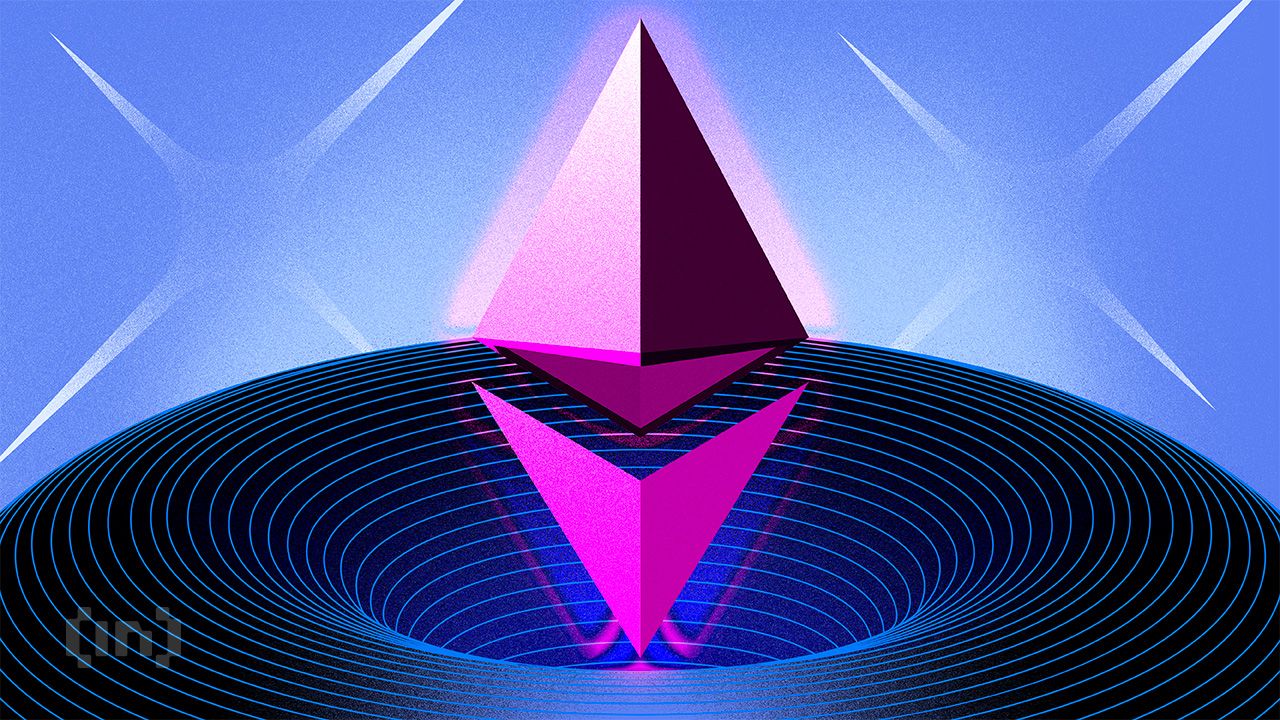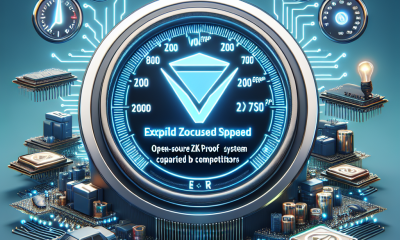Memecoins
Vodafone Innovates Mobile Tech: Integrates Cryptocurrency Wallets in SIM Cards to Shape Future Smartphone Use

In an innovative fusion of technologies, Vodafone is charting a new course in the telecommunications industry by proposing to merge cryptocurrency wallets with subscriber identity module (SIM) cards. This ambitious project underscores the company’s commitment to leveraging blockchain technology in enhancing smartphone usability. This initiative is part of Vodafone’s broader finance strategy, which includes Vodafone Idea Ltd., an affiliated entity primarily operating in India. Despite Vodafone Group owning a 45.5% stake in Vodafone Idea Ltd., the latter is on a trajectory to accumulate nearly $3.1 billion in debt, incorporating $1.85 billion in loans over the forthcoming two years.
During a revealing conversation with Yahoo Finance Future Focus, David Palmer, Vodafone Blockchain Lead, articulated the company’s vision for integrating blockchain technology within the realm of mobile connectivity. Palmer forecasted that by the year 2030, the world could see an upwards of eight billion smartphones in operation, with a significant number being blockchain-enabled. He envisions a future where SIM cards do not just secure user identity but also operate as a gateway to digital wallets and blockchain platforms, exploiting the inherent security features of these SIMs for cryptographic purposes. Palmer’s projections include an exponential rise in the adoption of crypto wallets, anticipating over 5.6 billion such wallets by 2030, potentially covering 70.5% of the global population.
Vodafone’s stride towards this integration comes at a time when the Vodafone Idea Ltd. is strategizing to bolster its financial standing, having recently divested $2.25 billion worth of shares in preparation for a more considerable debt acquisition anticipated to be around $3.1 billion. Amidst these financial reshufflings, Vodafone Group itself has been vigorously active throughout 2024, forging significant collaborations aimed at propelling the company forward into the digital era.
A notable partnership that emerged was with Microsoft, announcing a decade-long strategic alignment designed to bring generative artificial intelligence (AI) services to Vodafone’s clientele. This collaboration, celebrated by Microsoft CEO Satya Nadella, aims to introduce a new generation of AI that could revolutionize industries and organizations globally by unlocking unprecedented opportunities.
The initiative taken by Vodafone is not an entirely novel concept within the wider tech ecosystem. Back in 2019, VaultTel, a U.S. startup, embarked on a similar venture. The firm aimed at creating a physical wallet that could be inserted into a phone’s SIM slot, illustrating an early attempt to bridge mobile technology with blockchain infrastructure.
Additionally, in a move aligning with its innovative spirit, Vodafone previously ventured into the digital art space by auctioning the world’s first SMS, “Merry Christmas,” as a Non-Fungible Token (NFT) for charity. This endeavor not only highlighted the company’s pioneering approach to technology adoption but also its willingness to explore and invest in nascent digital spaces.
This latest venture by Vodafone signifies a growing trend in the telecommunications sector towards more integrated, secure, and technologically advanced services. By harnessing the power of blockchain, Vodafone aims to offer its users an unparalleled level of security and convenience, potentially transforming how we think about mobile technology and financial transactions. As the digital landscape continues to evolve, the confluence of mobile technology and blockchain represents a promising frontier for innovation, one that Vodafone is keenly poised to explore.
Memecoins
Fetch.ai Transforms into Artificial Superintelligence Alliance (ASI) Amidst Successful Merger with Ocean Protocol and SingularityNET, Promising Market Growth

In a significant development for the world of cryptocurrency and artificial intelligence (AI), Fetch.ai’s (FET) evolution into the Artificial Superintelligence Alliance (ASI) has captured the keen interest of investors and blockchain enthusiasts alike. This transformative merger, incorporating both Ocean Protocol (OCEAN) and SingularityNET (AGIX), marks a pivotal juncture in Fetch.ai’s journey, promising to reshape its collective identity under the ASI umbrella. As a result, the cryptocurrency community is abuzz with speculation on how this transition will impact Fetch.ai’s market value and the broader implications for the AI-driven token market.
Set to be finalized by mid-July, the merger has observed a proactive engagement from both retail and institutional investors. Notably, FET whales have aggressively capitalized on this venture, anticipating a lucrative outcome once the merger attains completion. In just a week, notable addresses holding between 100,000 and 10 million FET have significantly expanded their holdings, accumulating over 62.5 million FET, valued approximately at $74 million. This bullish accumulation underscores the confidence major investors have in the potential of Fetch.ai as it transitions into ASI, evidencing a strong belief in the value proposition of the merged entity.
The burgeoning optimism is not confined to whales alone; it is equally palpable among retail investors. Positive sentiment has dominated social media discussions and crypto forums, where Fetch.ai’s merger into ASI has been a hot topic of conversation. This collective anticipation is grounded in the recognition of ASI’s potential to pioneer transformative AI solutions within the blockchain sphere, further propelled by Fetch.ai’s strategic collaborations and technological advancements.
However, the trajectory towards Fetch.ai’s price surge is not devoid of challenges. Despite the heightened expectations post-merger, the cryptocurrency market’s broader trends have exerted a counterbalancing force, leading to a period of consolidation for FET. Trading between $1.05 and $1.75, this phase of price stabilization is anticipated to persist in the short term. Nevertheless, market analysts and investors alike hold a consensus that the conclusion of the merger and the onset of new developments within ASI would catalyze a break from this consolidation, steering Fetch.ai’s value on an upward trajectory.
The synthesis of Fetch.ai with Ocean Protocol and SingularityNET into ASI symbolizes a significant milestone in the fusion of blockchain technology with artificial intelligence. By adopting a united front under the FET ticker, ASI aims to leverage the strengths of each participating entity to foster innovation in AI and blockchain applications. This amalgamation is poised to enhance data interoperability, privacy features, and decentralized governance, thereby offering a comprehensive ecosystem for AI development and deployment on the blockchain.
Market response to Fetch.ai’s strategic maneuvers and the formation of ASI hints at a broader recognition of AI’s integral role in the future of cryptocurrency. As investors align their portfolios to capitalize on this transformative trend, Fetch.ai’s journey from a standalone entity into a cornerstone of the ASI reflects the dynamic and synergistic potential of combining AI with blockchain technology.
In the rapidly evolving landscape of AI and cryptocurrencies, Fetch.ai’s transition into ASI emerges as a bellwether for the industry’s forward trajectory. With its impending merger set to redefine the boundaries between artificial intelligence and blockchain, Fetch.ai stands at the vanguard of a new era, promising to unlock unprecedented opportunities for innovation, value creation, and technological advancement in the digital age.
Bitcoin
Bitcoin and Arbitrum Face Bearish Trends with Potential New Lows, While NFT Sector Continues Decline

As the digital financial marketplace braces for a pivotal July 2024, all eyes are set on potential game-changing developments within the cryptocurrency sector, especially with the anticipated launch of spot ethereum ETFs. This event marks a critical period not just for Ethereum but also for bitcoin and a selection of vital digital assets that could experience significant movements.
At the forefront of these potential shifts is Bitcoin, the pioneer cryptocurrency, which has maintained a price point above the $60,000 threshold, standing at $61,250 at the latest assessment. While the sustenance above this level might seem like a minor victory given the market’s unpredictability, underlying indicators suggest a potential downturn. The formation of a double-top pattern on the weekly chart signals a bearish trend, with Bitcoin’s price teetering on the brink of breaking below the crucial neckline positioned at $61,583. Should this breakdown occur, a support level at $59,074 could provide some resistance, yet the overarching projection points to a drop towards $51,172—a four-month low, marking a 17.5% decline from current levels.
This downturn forecast resonates with the broader market sentiment notoriously encapsulated by the “sell in May and go away” adage, affecting ETF inflows for spot btc. The inherent volatility within the cryptocurrency domain only amplifies the plausibility of such a pullback. However, a counter movement propelling Bitcoin’s price above the $62,000 mark could invalidate this bearish outlook, fostering a rebound from either the $60,000 or $59,047 junctures.
Parallel to the developments within Bitcoin’s domain, Arbitrum, a significant Layer-2 token following Polygon (MATIC), is navigating through its own set of challenges. A noticeable decline in demand has ushered in a price reduction exceeding 61%, plummeting to $0.809. This price trajectory is encapsulated by a head-and-shoulders pattern, often regarded as a precursor to bearish reversals. While a descent to a $0 target is highly implausible given Arbitrum’s underlying strength, the asset’s current position suggests an imminent new all-time low, possibly dropping below its current nadir of $0.749.
In addition to these specific crypto assets facing potential lows, the broader NFT (Non-Fungible Token) market is enduring significant headwinds. After experiencing a resurgence in early 2024, trading volumes have dramatically fallen, from $39.2 million to merely $8.1 million in a span of three months. This 82% drop signifies waning interest, exacerbated by a lack of innovation and the increasing allure of alternative investment opportunities, including real-world assets and burgeoning sectors like AI-driven tokens. As bearish market conditions persist, compounded by these emerging investment trends, the NFT marketplace faces a continued downtrend potentially deepening its decline.
This consequential period within the cryptocurrency realm underscores the intricate dynamics shaping the market’s trajectory. As investors and stakeholders closely monitor these developments, the outcomes of these predicted movements—ranging from Bitcoin’s potential lows to Arbitrum’s anticipated price adjustment, down to the NFT marketplace’s dwindling volumes—will undeniably leave an enduring mark on the digital finance landscape as we advance towards the latter half of 2024. This critical juncture, highlighting not only the volatility but also the burgeoning opportunities within the cryptocurrency ecosystem, sets the stage for an enthralling chapter in the digital economy’s ongoing saga.
Bitcoin
SEC Nears Approval of Groundbreaking Ethereum Spot ETFs, Spearheaded by BlackRock and Grayscale, for July Launch

In an unprecedented move poised to reshape the landscape of cryptocurrency investment, the U.S. Securities and Exchange Commission (SEC) is on the verge of green-lighting a series of Exchange-Traded Funds (ETFs) designed to track the spot price of ethereum (eth), the world’s second-largest cryptocurrency by market capitalization. This development is anticipated to culminate by July 4, following intensive negotiations with heavyweight asset managers including BlackRock and Grayscale Investments.
The impending approval of Ethereum ETFs represents a monumental stride towards the maturation of cryptocurrency markets and a significant vote of confidence in the digital asset class from mainstream investment sectors. The collaborative efforts of industry giants underscore a shared conviction in Ethereum’s burgeoning potential and its pivotal role in the evolving financial landscape.
Building upon the momentum generated by the successful launch of bitcoin spot ETFs in January, which amassed inflows of approximately $13 billion, asset managers are strategically positioning themselves to capitalize on the burgeoning interest in digital assets. Particularly, Grayscale is spearheading a campaign to convert its existing trust into an ETF, underscoring a broader ambition to diversify investment portfolios within the crypto space.
Reports from industry insiders, including senior ETF analyst Eric Balchunas, hint at the possibility of Ethereum-based funds making their market debut as early as July 2. This aligns with Reuters’ forecast for an official SEC endorsement by July 4. The assurance emanates from ongoing negotiations indicating that any outstanding concerns revolve around minor adjustments to the offering documents, putting the final stamp of approval within reach.
Despite the palpable excitement surrounding these developments, opinions regarding the market’s reception to Ethereum ETFs vary among analysts. While earlier introductions of Bitcoin-based financial products witnessed a staggering surge in market assets to nearly $53.46 billion, skeptics like James Butterfill, head of research at Coinshares, caution against assuming a parallel trajectory for Ethereum. He cites the disparity in market size and volume between Bitcoin and Ethereum as significant factors that could temper expectations. Similarly, Bryan Armour expresses reservations about Ethereum ETFs igniting equivalent levels of investor enthusiasm.
Conversely, a more optimistic outlook is shared by other experts, including Matt Hougan, chief investment officer at Bitwise, who projects that Ethereum Exchange-Traded Products (ETPs) could attract $15.5 billion in net flows within the first eighteen months of their launch. His predictions are buoyed by an analysis of market capitalizations and a review of international ETF markets.
The forthcoming ETFs, once approved, could commence trading within 24 hours owing to prior rule amendments sanctioned for major exchanges such as the New York Stock Exchange, Nasdaq, and Cboe. This swift transition from approval to market entry underscores the SEC’s commitment to extending investment opportunities while fostering the growth of the digital asset sector.
This pivotal development not only heralds a new era for Ethereum but also fortifies the bridge between traditional financial markets and the emergent realm of digital currencies. The introduction of Ethereum ETFs stands as a testament to the cryptocurrency’s enduring appeal and its potential to offer diversified investment portfolios. As the digital currency ecosystem continues to evolve, the spotlight on Ethereum and its underlying technology highlights the growing consensus around its value proposition and utility in the broader financial landscape. Beyond speculative interest, Ethereum’s foundational role in the expansion of decentralized finance (DeFi) platforms and non-fungible tokens (NFTs) underscores its significance beyond mere investment assets, paving the way for a new paradigm in the digital economy.
-

 Cryptocurrency2 months ago
Cryptocurrency2 months agoExploring the Future of Finance: Regulated Settlement Network PoC Aims to Unify Banking and Securities on a Single Platform
-

 Cryptocurrency1 month ago
Cryptocurrency1 month agoFantom Foundation Boosts Blockchain Performance with Opera Upgrade to Hit 2000 TPS, Following Google Cloud Partnership
-

 Cryptocurrency2 months ago
Cryptocurrency2 months agoProtocol Village Announces ‘Expander’: An Open-Source ZK Proof System Doubling Speed Compared to Competitors
-

 Cryptocurrency2 months ago
Cryptocurrency2 months agoOpenAI Gears Up for Exciting ChatGPT Update: New Features and Potential Pricing Changes on the Horizon
-

 Altcoins2 months ago
Altcoins2 months agoFive Altcoins Including Pepe Coin and FLOKI Eye Major Gains: A Path to Turn $10,000 into $1 Million Revealed
-

 Cryptocurrency2 months ago
Cryptocurrency2 months agoDr. Ted Kaouk Named Inaugural Chief AI Officer by CFTC
-

 Cryptocurrency2 months ago
Cryptocurrency2 months agoDropbox Suffers Significant Data Breach: A Detailed Look at the Incident
-

 Cryptocurrency2 months ago
Cryptocurrency2 months agoMember of REvil Ransomware Syndicate, Rabotnik, Receives 13-Year Jail Sentence



